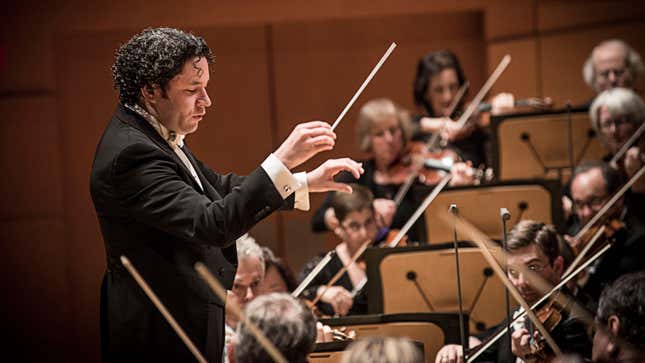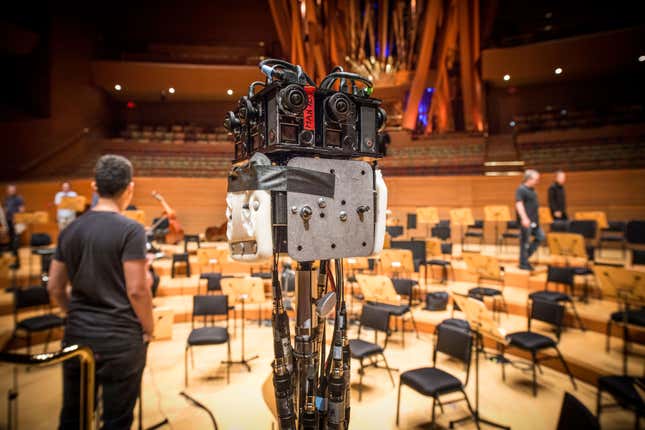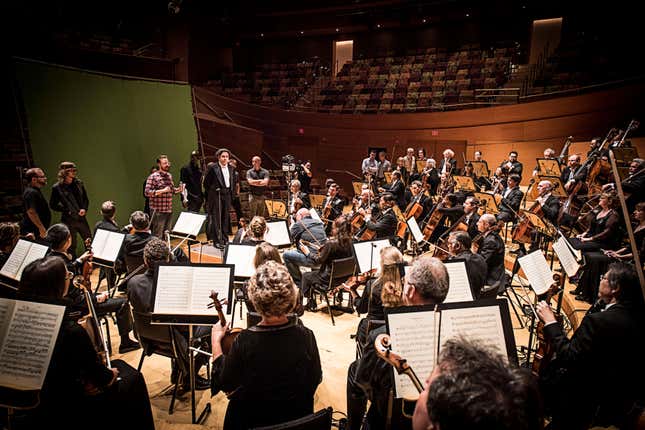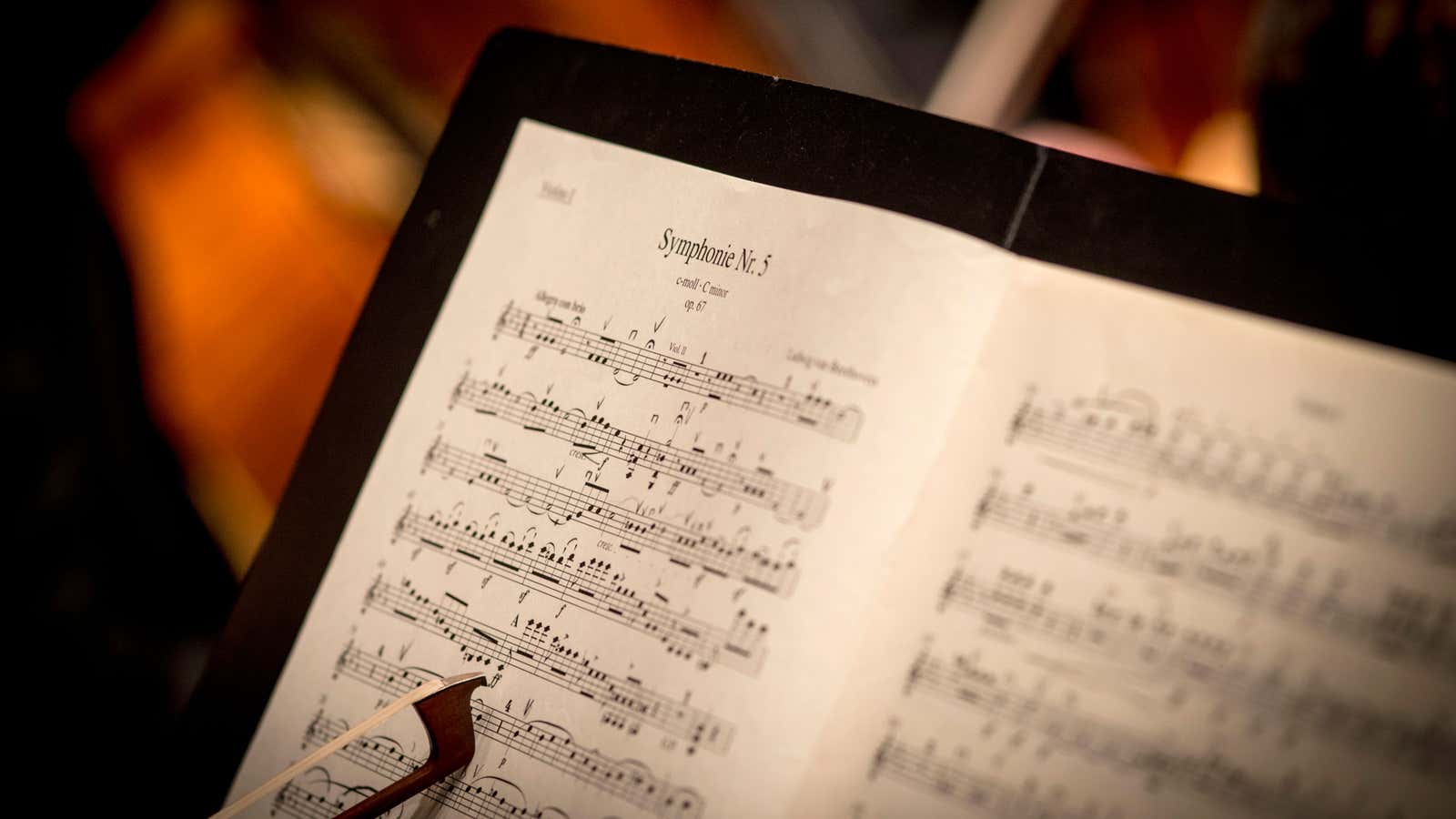Gustavo Dudamel, the charismatic principal conductor of the Los Angeles Philharmonic, inspires his supporters with the idea that music is a universal human right. But classical music isn’t so universally enjoyed. The philharmonic’s patrons tend to skew grayer; its average ticket buyer is 60 years old.
The genre’s demographic stubbornness has led to a number of initiatives to reach a younger, more diverse audience. It discounts tickets for students and first timers, hosts events for 20- and 30-something music enthusiasts, and tries to enhance the symphony-going experience by adding multimedia components to some performances.
Its latest gambit also is meant to attract wider audiences, but instead of luring people into the performance hall for the taste of the philharmonic experience, it’s taking a taste of the philharmonic experience to the people.
The group has loaded a truck with six Oculus Rift virtual-reality headsets to introduce its music to would-be classical fans around the LA metropolitan area. The so-called VAN Beethoven is outfitted with carpeting and chairs from the orchestra’s home at the Walt Disney Concert Hall to help simulate the concert-going experience.

“There are many reasons why people don’t go to Walt Disney Concert Hall, whether they’re intimidated or can’t get downtown, or don’t think they’ll like it,” Amy Seidenwurm, the philharmonic’s director of digital initiatives, tells Quartz. But it’s hoping virtual reality will help overcome such hurdles.
For VAN Beethoven, the orchestra recorded the first movement of the composer’s most iconic work, Symphony No. 5—which opens with the recognizable dun dun dun dunnn—as two camera rigs with 14 GoPro cameras and 40 microphones captured the sights and sounds of the performance.
Through an Oculus headset, viewers will be able to experience the music almost as if it were live. The main differences will be the intimate points of view—the rigs were positioned behind the conductor, between him and the orchestra, and behind the percussions—and dazzling visual effects reminiscent of Fantasia.
Though it’s the immersive visuals that typically wow people experiencing virtual-reality technology for the first time, the audio is just as important in creating a sense of presence—to make people feel as if they were really there. That’s especially the case for a musical performance. “We recorded it to be directional 3D audio,” says Seidenwurm. “You feel a very strong sense of place based on where you are in the room.”

VAN Beethoven will go on tour from Sept. 11 to Oct. 18. Its stops will include the Los Angeles County Fair, the LA Korean Festival, and a back-to-school night at a South Central LA high school. The app will be available for download for the Oculus and Samsung Gear VR headsets.
The orchestra might record more performances in 360 degrees if its first virtual-reality experiment is well received. Seidenwurm says she’d like to take it another step as the technology improves—for example, to let people zoom in on a particular section of the orchestra or switch between camera views.

“I don’t think this replaces a concert,” Seidenwurm says. “I think a concert is a really special moment in time.”
But if the experience gets more people interested in listening to classical music and attending a performance in person, “then we’ve done our job,” she says.
